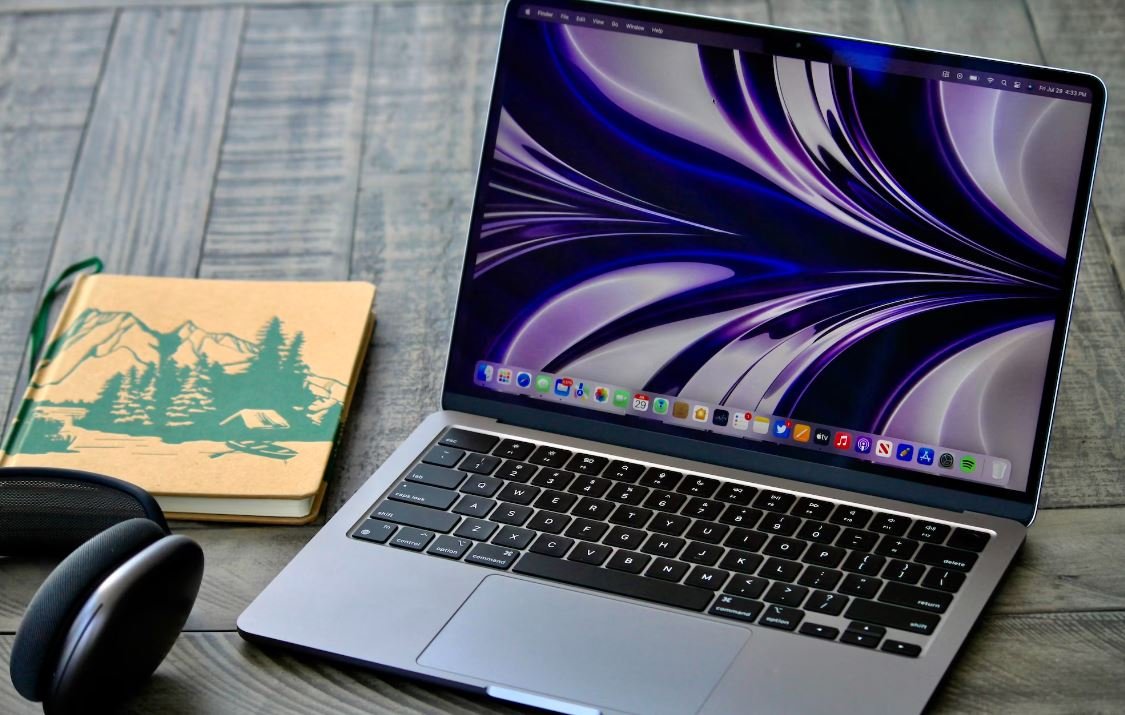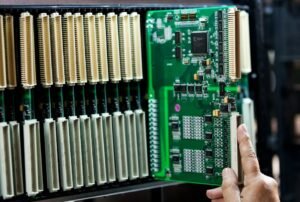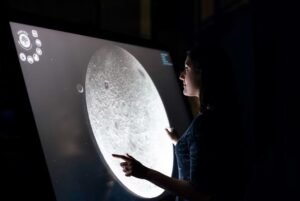What Is Footage in CCTV
Introduction
In the realm of CCTV (Closed-Circuit Television) surveillance systems, the term “footage” is commonly used to refer to the recorded video captured by the cameras. Footage plays a crucial role in providing evidence, monitoring activities, and ensuring security. Understanding what footage is in CCTV can help enhance your knowledge of surveillance technology and its applications.
Key Takeaways
- Footage refers to recorded video captured by CCTV cameras.
- It plays a significant role in providing evidence, monitoring activities, and ensuring security.
- Understanding footage in CCTV helps enhance knowledge of surveillance technology and its applications.
The Importance of Footage in CCTV
Footage captured by CCTV cameras serves as visual evidence for investigations, criminal proceedings, and insurance claims. It allows authorities or security personnel to review and analyze incidents, identify individuals, and establish a timeline of events. *Analyzing footage can help detectives uncover critical clues that lead to solving a crime.* CCTV footage can also be used for preventive purposes, deterring potential criminals and reducing the likelihood of illegal activities.
Types of Footage Storage
CCTV systems typically offer different methods for storing footage, including:
- Digital Video Recorders (DVRs): These devices record and store footage on hard drives or network-attached storage (NAS) devices.
- Network Video Recorders (NVRs): NVRs encode and store digital footage from IP cameras directly onto a network or cloud storage.
Quality and Resolution of CCTV Footage
Modern surveillance cameras provide various options in terms of resolution and quality. Higher resolution cameras produce clearer and more detailed footage, aiding in the identification of individuals or objects of interest. *With advancements in technology, some cameras even offer ultra-high-definition footage with exceptional clarity.* It is important to consider the specific monitoring needs and budget when selecting the appropriate camera resolution.
Legal Considerations for CCTV Footage
While CCTV footage is an invaluable tool for security, it is essential to be aware of legal considerations surrounding its usage. Privacy laws vary by jurisdiction, and it is necessary to comply with applicable regulations. *Proper notification and signage informing individuals about monitoring can help address legal concerns.* Additionally, the retention period for footage should adhere to local regulations to maintain legal compliance.
| Storage Type | Advantages | Disadvantages |
|---|---|---|
| DVR |
|
|
| NVR |
|
|
Future Trends in CCTV Footage Analysis
As technology advances, the analysis of CCTV footage continues to evolve. Here are a few noteworthy trends:
- Artificial Intelligence (AI) Integration: AI algorithms can analyze footage in real-time, identifying objects, detecting anomalies, and automating video surveillance tasks.
- Facial Recognition: Facial recognition technology enables automatic identification and tracking of individuals in CCTV footage, aiding in investigations and improving security.
- Behavioral Analytics: Analyzing patterns and behaviors in CCTV footage can help identify suspicious activities, predict potential threats, and optimize security measures.
| Resolution | Advantages | Applications |
|---|---|---|
| Standard Definition (SD) |
|
|
| High Definition (HD) |
|
|
| Ultra High Definition (UHD) |
|
|
Conclusion
Understanding the concept of footage in CCTV is vital for anyone interested in surveillance technologies. From providing evidence and monitoring activities to ensuring security, footage plays a crucial role in surveillance systems. With advancements in storage options, image quality, and future trends like AI integration, the effective use of CCTV footage continues to evolve, making it an indispensable tool in various domains.

Common Misconceptions
Misconception 1: Footage in CCTV is always clear and high-definition
One common misconception about CCTV footage is that it is always clear and high-definition. However, this is not always the case. There are several factors that can affect the quality of footage, such as the placement of cameras, lighting conditions, and the overall quality of the CCTV system.
- The placement of cameras can impact the view and clarity of the footage.
- Lighting conditions, such as low light or glare, can make the footage less clear.
- The quality of the CCTV system itself plays a critical role in determining the clarity of the footage.
Misconception 2: CCTV footage is always recorded in real-time
Another misconception is that CCTV footage is always recorded in real-time. While some systems offer live monitoring and recording, many CCTV systems record footage for later review rather than providing real-time monitoring.
- Not all CCTV systems have live monitoring capabilities.
- Recording footage for later review is often more cost-effective and efficient.
- Real-time monitoring may require more advanced and expensive systems.
Misconception 3: Once recorded, CCTV footage can be easily enhanced like in crime TV shows
Many people believe that once CCTV footage is recorded, it can be easily enhanced and enlarged, just like in crime TV shows. However, the reality is quite different.
- Enhancing and enlarging footage beyond its original quality is often not possible.
- The resolution and details captured by the cameras initially limit the potential for enhancement.
- CCTV footage is not magically enhanced like depicted in fictional shows.
Misconception 4: CCTV cameras can see and record in complete darkness
It is a common misconception that CCTV cameras can see and record in complete darkness. While there are infrared cameras that can capture images in low light or darkness, these cameras have limitations.
- Infrared cameras have a limited range and may not provide clear images in complete darkness.
- Extreme darkness may result in grainy or distorted footage.
- Additional lighting sources may be required for capturing clear footage in dark environments.
Misconception 5: CCTV footage is always stored for an indefinite period
Lastly, there is a misconception that CCTV footage is always stored for an indefinite period. While some systems may be designed to retain footage for extended periods, many systems have limitations on storage capacity and retain footage for a limited duration.
- CCTV systems often have a specific storage capacity or retention period for recorded footage.
- Storage limitations may lead to the automatic deletion of older footage to make space for new recordings.
- Retention policies are often dictated by legal requirements and organizational needs.

Types of CCTV Cameras
CCTV cameras come in various types, each with its own unique features and functions. Here are some common types:
| Type | Description |
|---|---|
| Dome | Dome-shaped cameras suitable for indoor or outdoor use. They are discreet and blend well with surroundings. |
| Bullet | Long and cylindrical cameras often used for outdoor monitoring. They have excellent range and weatherproof design. |
| PTZ | Pan, tilt, and zoom cameras that can be remotely controlled to monitor a wider area. They provide versatile surveillance. |
| Box | Traditional cameras used indoors. They offer high-quality images and are customizable with different lenses. |
| Wireless | Cameras that connect to the network wirelessly. They are easy to install and offer flexibility in camera placement. |
Benefits of CCTV Surveillance
CCTV surveillance systems provide numerous advantages for security and monitoring purposes. Here are some key benefits:
| Benefit | Description |
|---|---|
| Prevent Crime | The presence of CCTV cameras helps deter criminals and reduce the risk of theft, vandalism, and other illegal activities. |
| Evidence Collection | CCTV footage can serve as crucial evidence in criminal investigations or legal proceedings, aiding law enforcement or legal professionals. |
| Employee Monitoring | In workplace environments, CCTV cameras can support employee supervision, productivity monitoring, and ensure adherence to safety procedures. |
| Remote Monitoring | Surveillance systems with remote access capabilities enable real-time monitoring from anywhere, enhancing situational awareness. |
| Public Safety | CCTV cameras installed in public areas can help prevent incidents, detect emergencies, and aid in crowd management during events. |
Factors Influencing CCTV Image Quality
The quality of CCTV footage is influenced by various factors. Here are some key elements that affect image clarity:
| Factor | Description |
|---|---|
| Resolution | A higher resolution camera captures more details, resulting in clearer images and better identification of individuals or objects. |
| Lighting Conditions | Well-lit areas produce sharper footage. Insufficient lighting or strong backlighting can degrade image quality. |
| Lens Quality | A high-quality lens ensures optimal focus, reduced distortion, and better image reproduction. |
| Camera Positioning | The correct placement and angle of the camera is essential to capture the desired area effectively without obstructions. |
| Camera Maintenance | Regular cleaning and maintenance ensure the camera lens remains free from dust, dirt, or smudges that can affect image clarity. |
Regulations and Privacy Concerns
While CCTV systems contribute to security, privacy concerns and regulations regarding their use are significant considerations:
| Aspect | Description |
|---|---|
| Data Protection | Security measures must be in place to protect recorded footage and ensure it is not accessed or used unlawfully. |
| Consent and Notice | Proper consent and clear notices should be provided to individuals when CCTV cameras are present in public or private areas. |
| Retention Period | There are typically legal requirements for how long CCTV footage should be retained before it is deleted or destroyed. |
| Prohibited Areas | Some regions may have restrictions on where surveillance cameras can be installed to protect privacy, such as changing rooms or bathrooms. |
| Access Control | Access to CCTV systems and recorded footage should be restricted to authorized personnel to prevent misuse or unauthorized access. |
CCTV Applications in Different Industries
CCTV technology finds applications across various industries, providing tailored solutions for specific needs. Here are some examples:
| Industry | CCTV Use |
|---|---|
| Retail | Preventing theft, monitoring customer behavior, reducing shrinkage, and enhancing store security. |
| Transportation | Monitoring traffic, ensuring passenger safety, detecting accidents, and preventing vandalism or theft at transport hubs. |
| Healthcare | Securing hospital premises, monitoring patient rooms, preventing unauthorized access to sensitive areas, and enhancing staff and patient safety. |
| Education | Monitoring school facilities, ensuring student safety, deterring vandalism or bullying, and enhancing campus security. |
| Banking | Protecting financial transactions, monitoring ATMs, preventing fraud, ensuring customer safety, and securing bank premises. |
Integration with Other Security Systems
CCTV systems can be integrated with other security solutions to enhance overall safety measures. Here are some common integrations:
| Integration | Description |
|---|---|
| Access Control | Linking CCTV surveillance with access control systems allows for visual verification before granting or denying access to specific areas. |
| Intrusion Detection | CCTV can be integrated with intrusion detection systems to trigger cameras when security breaches or unauthorized access occur. |
| Alarm Systems | When an alarm is triggered, CCTV cameras can be set to focus on the alarmed area, providing real-time visual verification or recording. |
| Fire Detection | CCTV footage can be used to monitor smoke and fire detectors, providing early detection and potential evidence for investigations. |
| Video Analytics | Integrating video analytics software enables advanced functions such as facial recognition, object tracking, or abnormal behavior detection. |
The Future of CCTV Technology
As technology advances, CCTV systems continue to evolve with new features and capabilities. Here are some developments on the horizon:
| Development | Description |
|---|---|
| Higher Resolutions | Advancements in camera sensor technology will offer even higher resolution footage, enabling enhanced surveillance and identification capabilities. |
| Artificial Intelligence | AI-powered video analytics will become more prevalent, allowing CCTV systems to automatically detect and categorize objects or events. |
| Cloud Storage | Storing CCTV footage in the cloud will become increasingly popular, providing convenient access, scalability, and backup options. |
| Smart Integration | Integration with smart devices and home automation systems will enable seamless control and monitoring of CCTV cameras through voice commands or mobile apps. |
| Mobile Surveillance | Mobile apps will offer enhanced functionality, allowing users to remotely monitor CCTV footage in real-time from their smartphones or tablets. |
Conclusion
CCTV systems play a crucial role in surveillance and security across various industries and settings. With different camera types, benefits, image quality factors, and integration possibilities, these systems provide effective means for preventing crime, collecting evidence, and enhancing safety. However, it is important to balance security needs with privacy considerations and adhere to applicable regulations. As technology advances, CCTV technology continues to evolve, promising even higher resolutions, artificial intelligence capabilities, cloud storage, and seamless integration with smart devices, revolutionizing the way we monitor and secure our surroundings.
FAQ – What Is Footage in CCTV
What is meant by “footage” in CCTV?
In the context of Closed-Circuit Television (CCTV), “footage” refers to the recorded video or images captured by the cameras installed in the surveillance system. It can be considered as evidence or documentation of events that have taken place within the camera’s field of view.
How is CCTV footage recorded?
CCTV footage is typically recorded using Digital Video Recorders (DVRs) or Network Video Recorders (NVRs). These devices are connected to the surveillance cameras and store the video data onto internal hard drives or external storage media. Some advanced systems also offer cloud-based storage options.
What are the typical uses of CCTV footage?
CCTV footage serves various purposes, including but not limited to:
- Crime prevention and detection
- Surveillance for public safety
- Monitoring of sensitive areas
- Identification and documentation of incidents or accidents
How long is CCTV footage typically retained?
The retention period for CCTV footage varies depending on the specific requirements and legal regulations in different jurisdictions. Commonly, the footage is retained for a certain number of days or weeks before it is overwritten with new recordings. In some cases, preservation of footage may be necessary for longer periods, such as during ongoing investigations.
Can CCTV footage be used as evidence in legal proceedings?
Yes, CCTV footage can serve as crucial evidence in legal proceedings. When properly captured and authenticated, it can provide visual documentation of events, help identify individuals involved, and support claims or defenses in court. However, the admissibility of CCTV footage may also depend on specific legal requirements and the integrity of the recording.
How can CCTV footage be accessed and reviewed?
CCTV footage can be accessed and reviewed using the designated software or hardware provided by the CCTV system manufacturer. This often includes a user interface that allows authorized individuals to search for specific dates, times, or camera locations to view the recorded footage. Some systems also offer remote access capabilities for real-time or playback viewing.
What are the common formats for CCTV footage?
The most common formats for CCTV footage include:
- H.264 or H.265 video compression formats
- AVI (Audio Video Interleave)
- MP4 (MPEG-4 Part 14)
- MOV (QuickTime Movie)
How is CCTV footage protected from unauthorized access?
To protect CCTV footage from unauthorized access, several security measures can be implemented, such as:
- Secure login credentials for authorized users
- Encryption of the recorded data
- Firewall protection for the network connection
- Physical security measures for the storage units
What should be considered when installing CCTV cameras for capturing effective footage?
When installing CCTV cameras for effective footage capture, the following factors should be considered:
- Proper camera positioning and angle of view
- Well-lit areas or use of infrared technology for night vision
- Camera resolution and image quality
- Number of cameras needed for comprehensive coverage
Are there any legal restrictions on the use of CCTV footage?
Yes, there may be legal restrictions on the use of CCTV footage, depending on the jurisdiction and specific circumstances. These restrictions may include compliance with privacy laws, data protection regulations, and obtaining proper consent for video surveillance. It is crucial to understand and adhere to the relevant laws and regulations when using CCTV footage.




